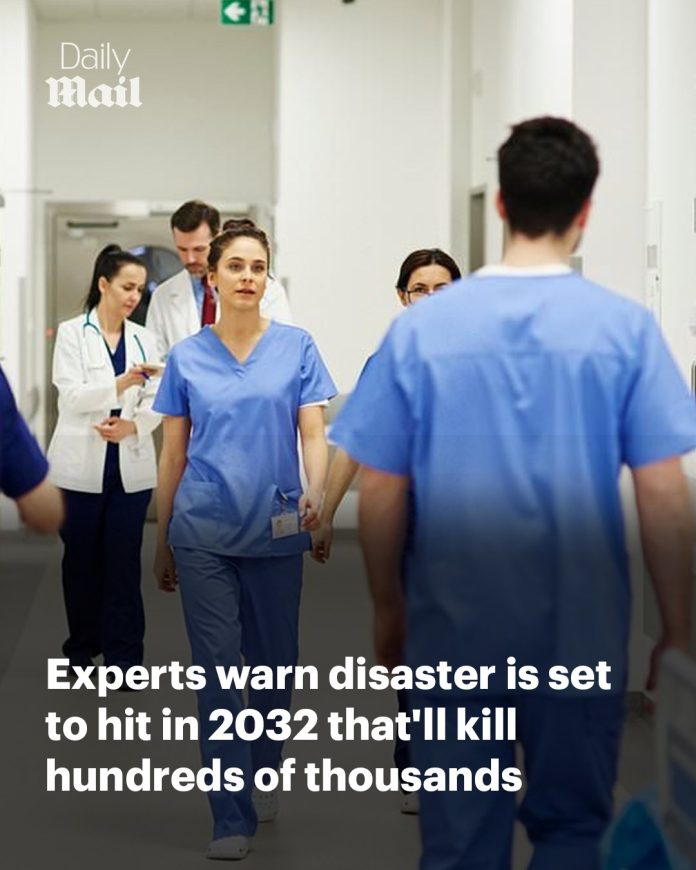Recent research indicates that U.S. hospitals are on track to face a significant crisis by 2032, with projections suggesting that hospital occupancy rates will exceed 85%. This anticipated surge in patient numbers could lead to a critical shortage of hospital beds, potentially resulting in hundreds of thousands of additional deaths annually.
Current Hospital Occupancy Trends
In the decade preceding the COVID-19 pandemic, the average hospital occupancy in the United States was approximately 64%. However, recent studies have shown a substantial increase, with post-pandemic occupancy rates now averaging 75%. This 11-percentage-point rise indicates that hospitals are operating at capacities comparable to or exceeding those observed during the peak of the pandemic, even as of 2024.

Factors Contributing to Increased Occupancy
Several factors contribute to the escalating hospital occupancy rates:
- Aging Population: The U.S. is experiencing a demographic shift, with a growing number of elderly individuals requiring more frequent and prolonged medical care.
- Delayed Medical Treatments: The pandemic led many to postpone elective procedures and routine check-ups, resulting in a backlog of patients now seeking medical attention.
- Staffing Shortages: Healthcare facilities are grappling with a shortage of medical professionals, limiting their capacity to accommodate patients despite the availability of physical beds.
Increased Prevalence of Chronic Diseases: Conditions such as diabetes, heart disease, and respiratory illnesses are on the rise, necessitating more hospital admissions and longer stays.
Implications of the Projected Bed Shortage
If current trends persist, the projected bed shortage by 2032 could have dire consequences:
- Increased Mortality Rates: Overcrowded hospitals may struggle to provide timely and adequate care, leading to preventable deaths.
- Extended Wait Times: Patients may face prolonged waiting periods for both emergency and elective services, exacerbating health conditions.
- Strain on Healthcare Workers: Overburdened staff may experience burnout, further diminishing the quality of patient care.
- Financial Pressures: Hospitals may incur higher operational costs due to the need for rapid expansions and resource allocations, potentially leading to increased healthcare costs for patients.
Strategies for Mitigating the Crisis
Addressing the impending hospital bed shortage requires a multifaceted approach:
- Infrastructure Expansion: Investing in the construction of new healthcare facilities and the expansion of existing ones to increase bed capacity.
- Telemedicine Integration: Utilizing telehealth services to manage non-critical patients remotely, thereby reducing in-hospital patient loads.
- Preventive Healthcare Initiatives: Promoting wellness programs and early intervention strategies to decrease the incidence of chronic diseases.
- Workforce Development: Implementing programs to train and retain healthcare professionals, ensuring that staffing levels meet patient care demands.
- Policy Reforms: Advocating for healthcare policies that support sustainable hospital operations and equitable patient access to medical services.

Role of Emergency Management
Emergency management directors play a pivotal role in preparing for and responding to such healthcare crises. Their responsibilities include:
- Developing Response Plans: Creating comprehensive strategies to address various emergency scenarios, including pandemics and natural disasters.
- Coordinating Resources: Ensuring the efficient allocation of medical supplies, personnel, and facilities during crises.
- Training Personnel: Organizing drills and educational programs to prepare healthcare workers for emergency response.
- Community Collaboration: Working with local governments, organizations, and the public to enhance community resilience and preparedness.
By proactively addressing these challenges through strategic planning, investment, and collaboration, the U.S. healthcare system can work towards averting the projected crisis and ensuring the well-being of its population.

















